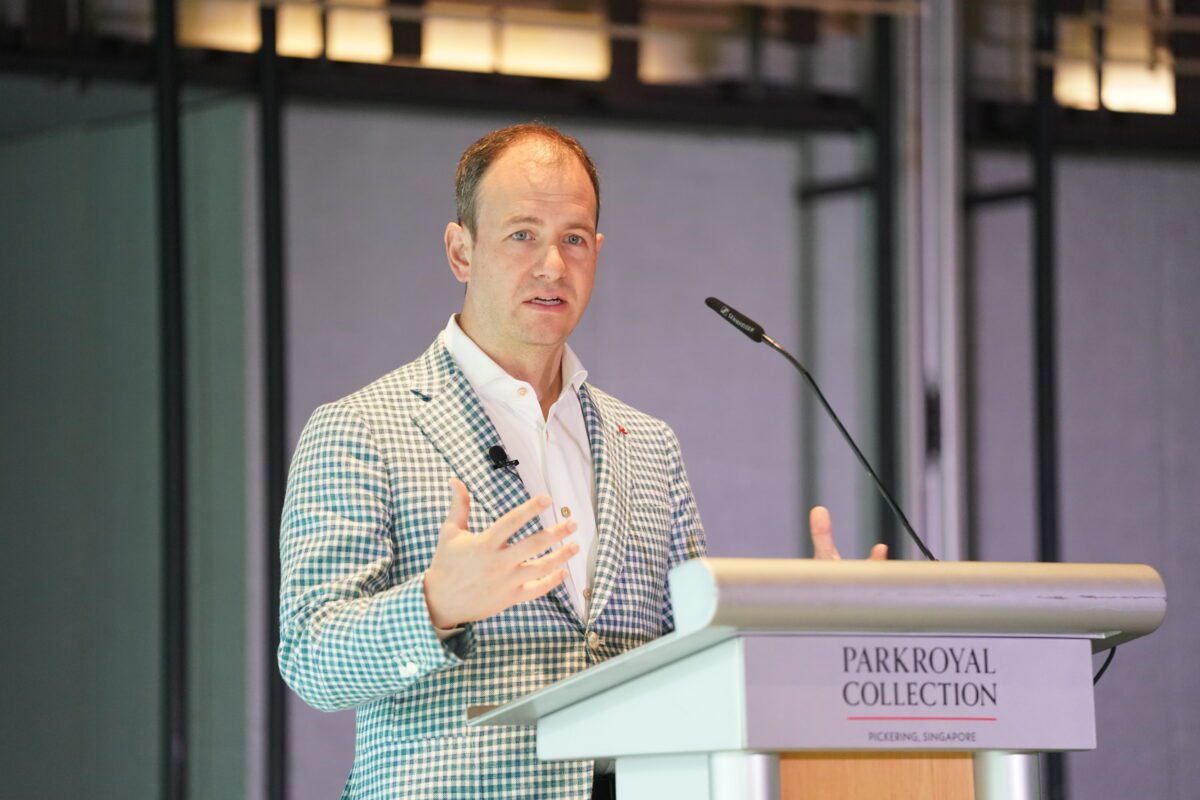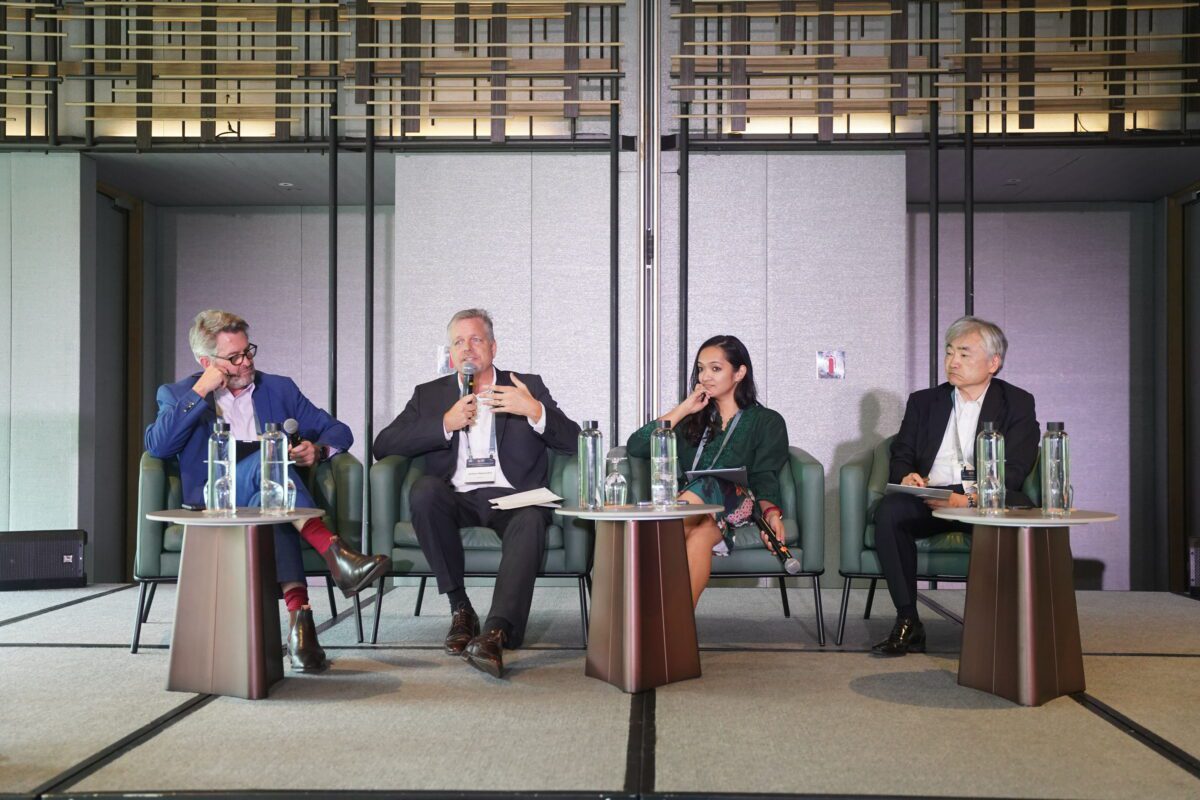Representatives from some of the most difficult-to-abate sectors have called for firmer pricing signals from governments across the Asia Pacific (APAC) region to support investment in decarbonisation. Speaking in the afternoon of Day One of the Carbon Market Institute’s 2nd Singapore Carbon Market & Investor Forum, speakers from industrial, transport, NGO and financial perspectives emphasised the circularity of strong governance frameworks followed by private sector financial mobilisation.
Carbon Removals Lead at the World Economic Forum, Nasim Pour highlighted the important role of corporate leadership in early adopters through the WEF’s First Movers Coalition. Ms. Pour commented that “When we see the scale of the climate finance gap, we can’t dismiss any tool that might help close the gap. We need to mobilise mass finance, and that includes private sector finance. This is where carbon markets come in.”
Ms. Pour emphasised the reality that while investment in at-source decarbonisation is important, the role of removals will become increasingly critical as we near our net zero 2050 targets. “Without new technologies, especially those that remove carbon from the atmosphere, we will be left with a massive loss of GDP” she said.
CORE Markets Co-Founder & CEO Chris Halliwell pointed to shrinking credit supply, increasing compliance requirements as a key motive for businesses investing in direct emissions reduction and removals credits. “At the end of the day, it’s really about long-term demand. Long-term demand is what creates change” Mr. Halliwell noted.
Strategy & Development Team Lead – Renewable Energy & Carbon Markets (APAC) with ACT Commodities, Nadia Nair commented on the benefit of increasing data transparency in trading platforms: “MRV, over time, gives us assurance. Assurance over time reduces your perceived risk and gives an investor confidence to enter into a market.”
Following the high-level roundtable and opening on frameworks to support investment in decarbonisation of heavy emitting sectors, the afternoon’s panels took a macro approach, considering real world examples and challenges for decarbonisation in the APAC region.
Founder & CEO of Meranti Green Steel, Sebastian Langendorf noted the fiscal difficulties of running a completely zero emissions operation in the current geopolitical and economic environments. “We’re not going straight to zero. We’re transitioning over time, but we have a 70% reduction in phase one. CBAM has an enormous impact on the steel industry and reducing the emissions.” Mr. Langendorf noted on Meranti Green Steel’s phased approach to emissions reduction.
Similarly, Monitcha Khammuang from Siam Cement Company highlighted the discrepancy between government pressures to decarbonise cement production, and consumers’ willingness to pay the necessary premium. “If there is no unlocking of regulation, it’s difficult to make those key investment decisions” she said.
It was made clear by panellists that energy transition in the region remains a significant roadblock for decarbonisation. Wei Sue, Head of Strategy at Climateworks Centre, commented on the communication challenge for companies making investments in green supply chains: “There is an additional challenge in terms of being able to communicate, and command, a premium for going a little further ahead of others.”
Sohini Chatterjee, Low Carbon-CCUS Lead at Rystad Energy supported earlier comments with particular reference to the role of governments in supporting early adoption of new technologies, noting that “Everywhere, if you see that CCUS is booming, it’s because of the government support for example through high emissions trading scheme prices.”
While representatives from heavy-emitting industries commented on the degree of challenge experienced from a private sector investment perspective, representatives speaking to transport highlighted the roles of market mechanisms, but also government partnerships in decarbonising the aviation and maritime sectors.
Reflecting on the transition of CORSIA from its pilot phase into first implementation and projected credit supply crunch, Senior Associate at Valitera, Tatiana Feuerhahn said “CORSIA is going to be quite challenging because there are limited eligible credit frameworks.”
In contrast to the market-based premise of CORSIA, Minerva Lim from the Singapore Maritime Port Authority showcased the Australia-Singapore Low Emissions Technology (ASLET) Memorandum of Understanding as another example of bilateral government partnerships to support decarbonisation in the region. “It’s very important for governments to consider how they can help industry and accelerate these processes. CSIRO is working with us on ASLET. This is a joint, cross-border scheme, which supports the commercialisation of low-emissions technology and transport” Ms. Lim said.
About the Forum
The Singapore Carbon Market & Investor Forum is the Asia Pacific Region’s premier decarbonisation and market-solutions focused event. In its inaugural year, the Forum brought together over 300 senior delegates, with a mix of government and private sector representatives present. The Forum brings together actors from across the broader Asia Pacific Region, with an emphasis on knowledge sharing for capacity building. The high profile of speakers and delegates continues to attest to the importance of fostering international linkages to support a net zero trajectory.
The full event program is accessible here.
About the Carbon Market Institute
CMI is an independent member-based institute that promotes best practice in market-based solutions and decarbonisation investment to help limit warming to 1.5ºC. CMI’s around 150 strong membership includes organisations from across the economy, in Australia and the Asia Pacific region. CMI also administers the Australian Carbon Industry Code of Conduct, which was established in 2018 to promote and steward consumer protection and market integrity. The CMI Board updates CMI’s Policy Positions annually, which draw on practical insights from—but are ultimately independent of—members.



